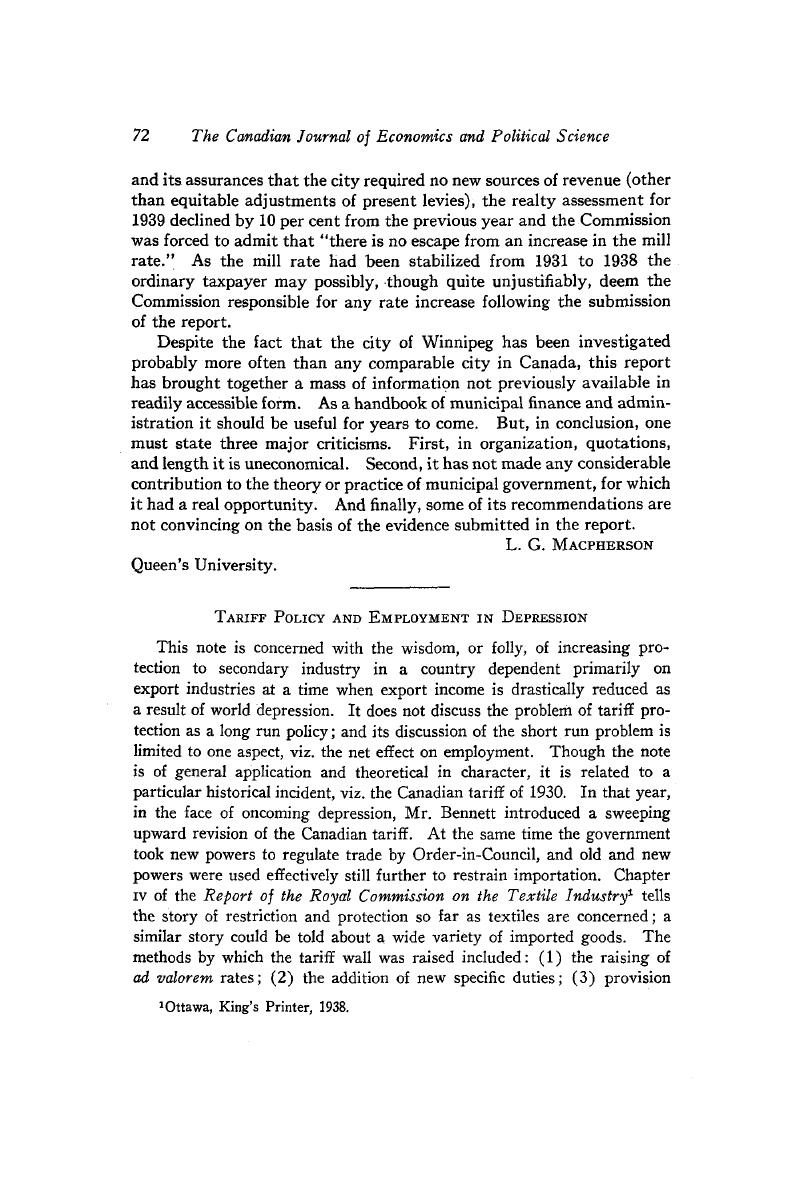Published online by Cambridge University Press: 07 November 2014

1 Ottawa, King's Printer, 1938.
2 Ottawa, King's Printer, 1935. Especially chap. II.
3 Ottawa, King's Printer, 1938. Especially pp. 20-5.
4 E.g., Harrod, R. F., International Economics (Cambridge, 1933).Google Scholar
5 In so far as the increased tariff increased the inflexibility of domestic prices, it would seem to have made the case for depreciation as a means of maintaining the domestic incomes of exporters stronger; but a secondary object of the new tariff was “defence of the dollar.” The export producers were caught both ways.
6 Bladen, V. W., “The Role of Trade Associations in the Determination of Prices” (Canadian Journal of Economics and Political Science, May, 1938).CrossRefGoogle Scholar
7 We are concerned, in other words, with the operation of the “export multiplier,” and with problems of “income-elasticity of demand.”
8 Export income will, of course, not all be spent; some will be saved, some is property income. There is, however, no reason to suppose that the proportion of export income which will be spent will be different in these two cases. The difference in this regard as between different export commodities, e.g. wheat and gold, is discussed by A. F. W. Plumptre and R. B. Bryce in their articles in this Journal, Aug., 1939.